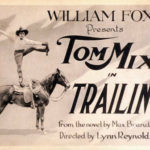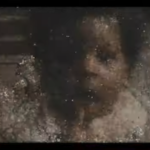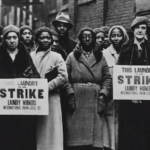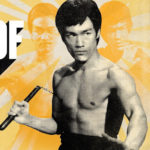J. Fred MacDonald
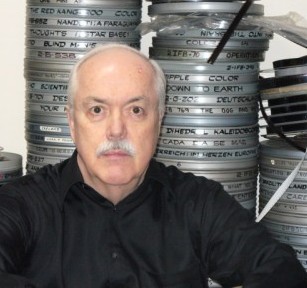 One of the true originals of moving-image archiving, J. Fred MacDonald, has died.
One of the true originals of moving-image archiving, J. Fred MacDonald, has died.
A longtime professor of history at Northeastern Illinois University until his retirement, he amassed one of the world’s largest personal collections of films: 40,000 reels of film, as well as 40,000 hours of recordings of radio broadcasts.
As an obituary in the Chicago Sun Times notes, his collection, with its huge diversity, reflected the scope of his interests and imagination. Many television and film producers sourced it, as did scholars in various fields. His archive “ultimately has benefitted the entire nation,” Rick Prelinger, a film professor at the University of California at Santa Cruz, told the Sun Times.
The Library of Congress purchased the collection in 2010. The Library’s Packard Campus for Audio Visual Conservation is gradually processing it. The collection is famous for its variety; the Sun Times obituary characterized it as “a bottomless well of oddities.” It had specialties that have become highly valued by film makers and scholars, such as his collection of films relating to Native American life; MacDonald and the Library of Congress, which retains the films in the collection, in 2011 awarded to the University of Arizona the license to maintain on online collection of 450 of its non-fiction films as the American Indian Film Gallery. Its films, dating from 1922 to 2011, document life among tribes from the Arctic Circle to Tierra del Fuego, with a concentration on the American Southwest.
In a 2011 promotional short about the collection made by Groundswell Educational Films, MacDonald says of the collection: “This would have been in a landfill, if not for our rescue efforts.” He states his purpose in making his collection: “Put em up on the air, put em up on the Internet; let people have access to them; download them when they want; use them in classes.”
Among the many moving-image archivists who paid tribute to Fred MacDonald on the listserv of the Association of Moving Image Archivists, AMIA-L, was Mike Mashon, the Packard Campus’s head of the Moving Image Section. He said “every one of my colleagues who has worked on [the collection] has favorite and/or unexpected titles they cataloged. And we’ve all mined it repeatedly for posting on our blog. Some examples: two versions of The House in the Middle (1953 and 1954); The Losers, an amazingly sexist TV ad from 1967; Facts About Film (1948), an instructional film on proper schoolroom projection technique; Blame It on Love (1940), a promotional film for Hotpoint kitchen appliances.”
Many of MacDonald’s colleagues celebrated his contributions, and his generosity, on the listserv. For example, Larry Yelen, another renowned collector, wrote: “Fred amassed one of the great ‘privately held’ archives, but his greatest holdings were in that incredible head of his. He taught me more than anybody in the entire industry, a lot of which had nothing to do with why I called him that day. He was one of those perfect educators — one who was equally a student, thirsty for knowledge, learning every day and sharing along the way.”
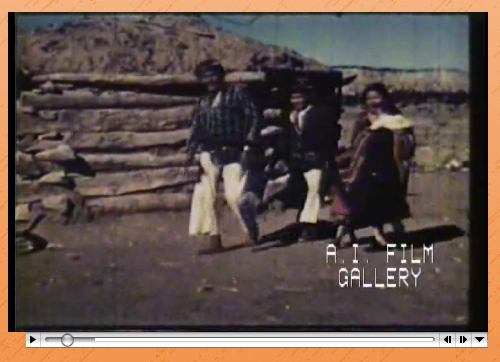
Still from “Navajo Sandpainter,” silent footage of tribal ritual (1941); image: AIFG (click image to view film)
Jennifer L. Jenkins, associate professor & curator, American Indian Film Gallery, University of Arizona, wrote: “His gift of the American Indian Film Gallery to the University of Arizona is a living legacy and an ongoing project of cultural repatriation and language recapture. Over a dozen Native students have worked on the project to date and taken the films he collected back into their communities.”
MacDonald published six books, including Blacks and White TV: African Americans in Television Since 1948; Television and the Red Menace: The Video Road to Vietnam; and Don’t Touch That Dial! Radio Programming in American Life from 1920 to 1960. He made much of his work freely available in online reproductions.
Here, and here, is some coverage of some of Fred MacDonald’s career and contributions.
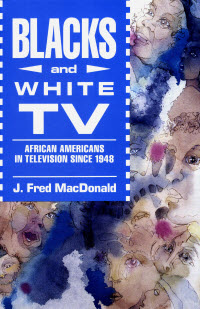 In his “retirement,” MacDonald completed his archiving-inspired pedagogical e-book, The Code of Clio. Like his earlier The History Shoppe, to which it was a sequel, The Code of Clio teaches young readers how to be a historian, and in particular how to recognize the historical significance of artifacts of popular culture. It recounts the summer-workshop experiences of a high-school student who discovers the joys of working with archival films and related materials that readers can download from links in the online book. An assignment leads him to screen forgotten moving-image gems such as an obscure film from Old Gold cigarettes about the Sioux Indians called Fallen Eagle, and another one about Indian sign language called Injun Talk – two of the titles that just happen to be among those on MacDonald’s American Indian Film Gallery.
In his “retirement,” MacDonald completed his archiving-inspired pedagogical e-book, The Code of Clio. Like his earlier The History Shoppe, to which it was a sequel, The Code of Clio teaches young readers how to be a historian, and in particular how to recognize the historical significance of artifacts of popular culture. It recounts the summer-workshop experiences of a high-school student who discovers the joys of working with archival films and related materials that readers can download from links in the online book. An assignment leads him to screen forgotten moving-image gems such as an obscure film from Old Gold cigarettes about the Sioux Indians called Fallen Eagle, and another one about Indian sign language called Injun Talk – two of the titles that just happen to be among those on MacDonald’s American Indian Film Gallery.
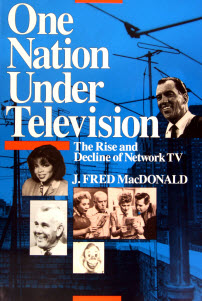 Also linked in the novel are other films, still images, and a political radio program in which the discussants ponder the future of rock and roll as it begins to take shape, in July 1956 – a connection that takes advantage of MacDonald’s history as a pioneer radio broadcaster of programming that placed popular culture into historical context. In 1980, 1981, and 1983, he produced a documentary series, Journeys, for WBEZ, the National Public Radio station in Chicago. Combining historical sound bits and critical interpretation, each program addressed a different historical topic, such as Sex Symbol: The Story of Marilyn Monroe; From Vampires to Slashers: The American Taste for Horror; Protest and Counter Culture in the 1960s; and We’re in the Money: Popular Culture in Depression America. MacDonald wrote and produced the programs, which are also available on his website, and hosted them with Wendy Leff.
Also linked in the novel are other films, still images, and a political radio program in which the discussants ponder the future of rock and roll as it begins to take shape, in July 1956 – a connection that takes advantage of MacDonald’s history as a pioneer radio broadcaster of programming that placed popular culture into historical context. In 1980, 1981, and 1983, he produced a documentary series, Journeys, for WBEZ, the National Public Radio station in Chicago. Combining historical sound bits and critical interpretation, each program addressed a different historical topic, such as Sex Symbol: The Story of Marilyn Monroe; From Vampires to Slashers: The American Taste for Horror; Protest and Counter Culture in the 1960s; and We’re in the Money: Popular Culture in Depression America. MacDonald wrote and produced the programs, which are also available on his website, and hosted them with Wendy Leff.
Fred MacDonald died on 9 April 2015. He was 74.
Previous Post: Houdini Spirited from a Movie Cache
Next Post: Why Deny Film to People in Prisons?

